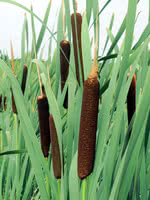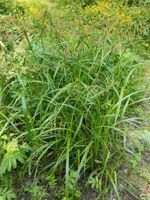Mon-Fri 9am - 5pm Mountain time
Common Cattail vs Panicled Bulrush
Typha latifolia
Scirpus microcarpus
CUSTOM GROW
CUSTOM GROW
Cattail is found all across North America, growing next to water. Like other waterside plants, Cattail provides erosion control and forage for animals.
It is suitable for land reclamation. Cattail is able to tolerate cold weather and occasional flooding.
Panicled Bulrush is a native perennial sedge that thrives in saturated soils and shallow water. Spreading readily by rhizomes, it quickly forms tall clumps that make it especially valuable for riparian plantings, erosion control, ecological restoration, and naturalization projects.
Its many-branched clusters of small flower heads give the plant its name and add texture to wetland landscapes. In addition to stabilizing shorelines and improving habitat quality, Panicled Bulrush provides food and cover for waterfowl, small mammals, and other wildlife. A cool-season grower, it is most active in spring and fall, slowing or going dormant during the heat of summer.

